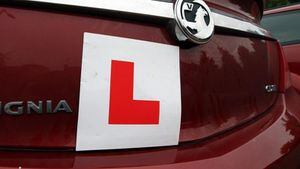Women drivers buck trend in two of our towns
Women in two of our region’s towns are more successful at men than passing driving tests – two of only 10 locations Britain where that is the case.

Both Oswestry and Newtown test centres buck the national trend as far as the gender division over pass rates is concerned, with women outperforming their male counterparts.
It comes as a study of insurance deals shows that men often pay higher premiums than women as they have more accidents, although pricing differently based on gender was banned by the EU in 2012.
But across most of Britain they appear to be better drivers, at least at the start, than women.
Despite that, Oswestry and Newtown test centre women have a higher pass rate.
Figures from the Driver and Vehicle Standards Agency show that, between April 2017 and March 2018, 51.2 per cent of women who attempted the practical test managed to pass, while 49.6 per cent of men were successful.
Across that period Oswestry test centre carried out 1,284 tests – 701 for women and 583 for men.
There were 648 passes, at a rate of 50.5 per cent – higher than Great Britain's average of 46 per cent.
For the same period in Newtown 55.6 per cent of women passed, while 52 per cent of men were successful.
The test centre carried out 1,192 tests during the period – 604 for women and 588 for men.
There were 642 passes, at a rate of 53.9 per cent, again than Great Britain's average of 46 per cent.
The test centre with the highest pass rate was Golspie, in the Scottish Highlands, where more than three quarters of learners were awarded their licences, while in The Pavilion, in Birmingham, less than a third were successful, making it the toughest.
On December 4 last year the driving test was changed, with many observers saying the new test is tougher than the old one.
Learners now must navigate for 20 minutes using a sat-nav, and explain how to test the brakes, clean the windscreen and de-mist windows while driving.
And rookie drivers do seem to be finding it harder. In March 2018 the pass rate was 41.5 per cent, compared with a pass rate of 53.4 per cent in April 2017, under the old test.
The data also shows that 45 per cent of people taking their test for the first time managed to pass, with four learners succeeding first time with no minor faults.
Drivers taking the test can pass with up to 15 minor faults, such as not checking your mirror at the right time.
DVSA deputy chief driving examiner, Gordon Witherspoon, said: "DVSA's priority is to help everyone through a lifetime of safe driving.
"All candidates are assessed to the same level and the result of their test is entirely dependent on their performance on the day.
“We expect candidates and instructors to become more familiar with the new test and well continue to monitor the impact of the changes.”





